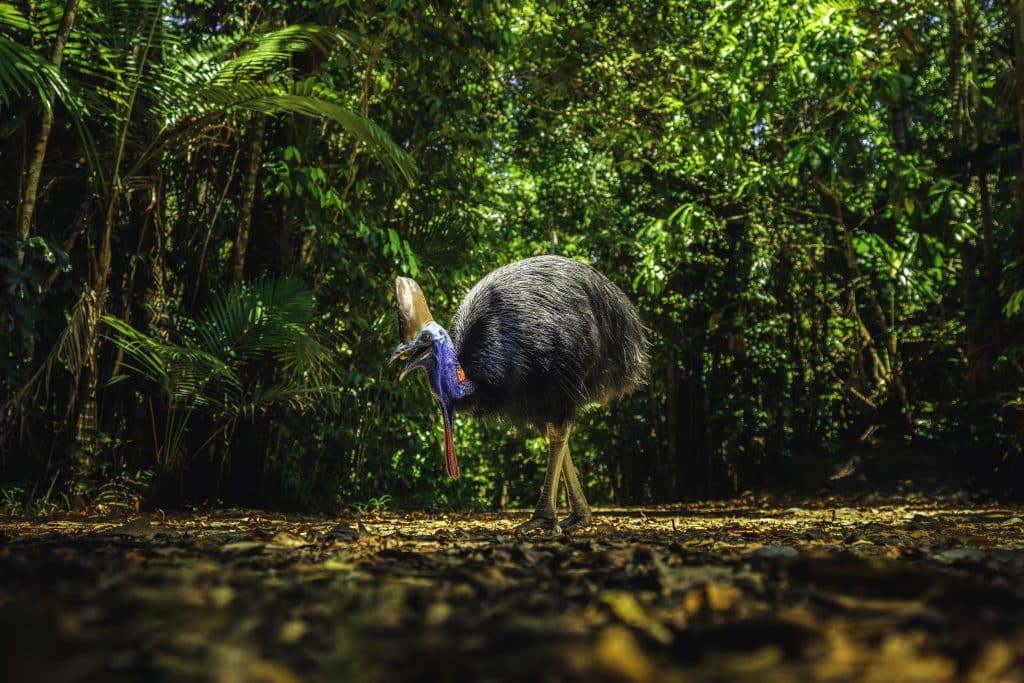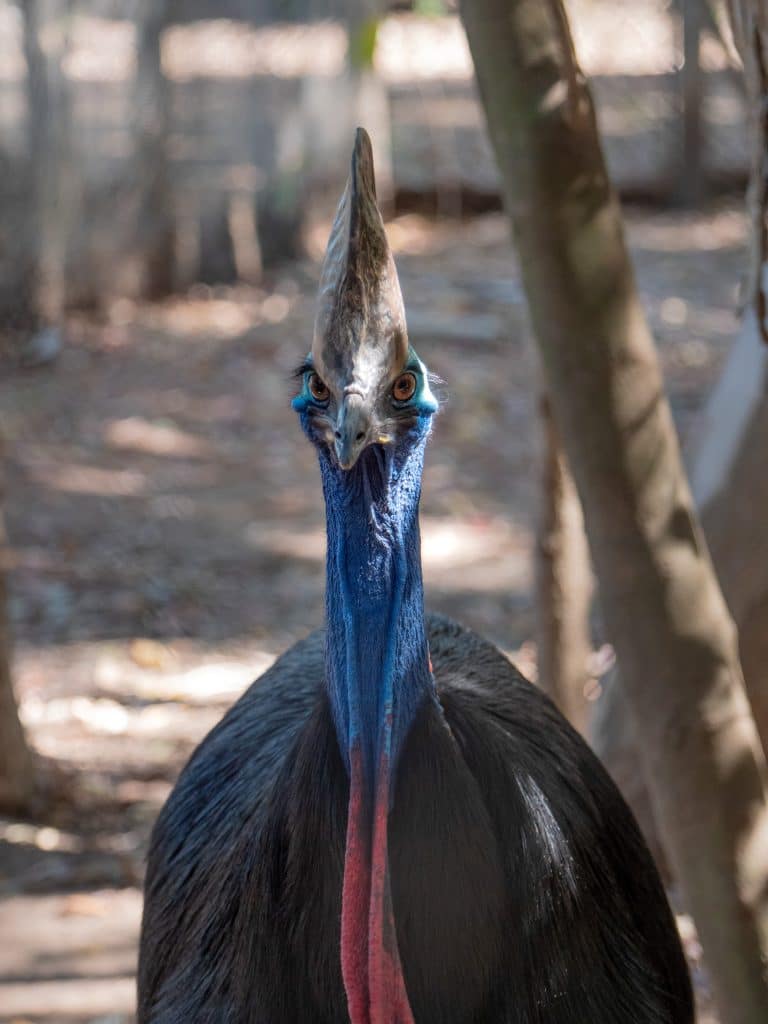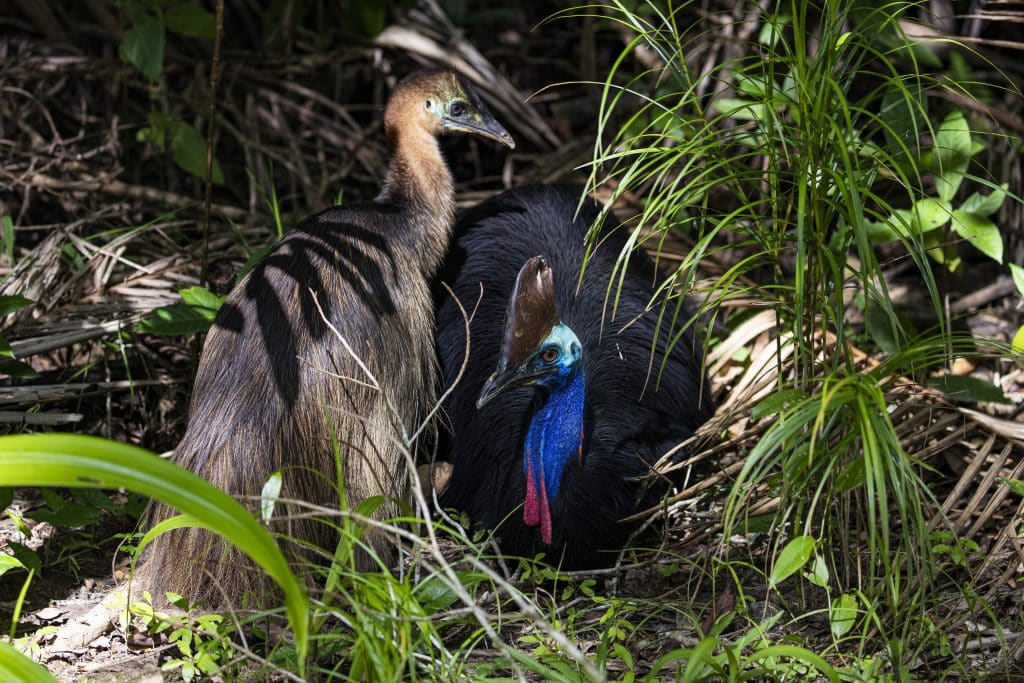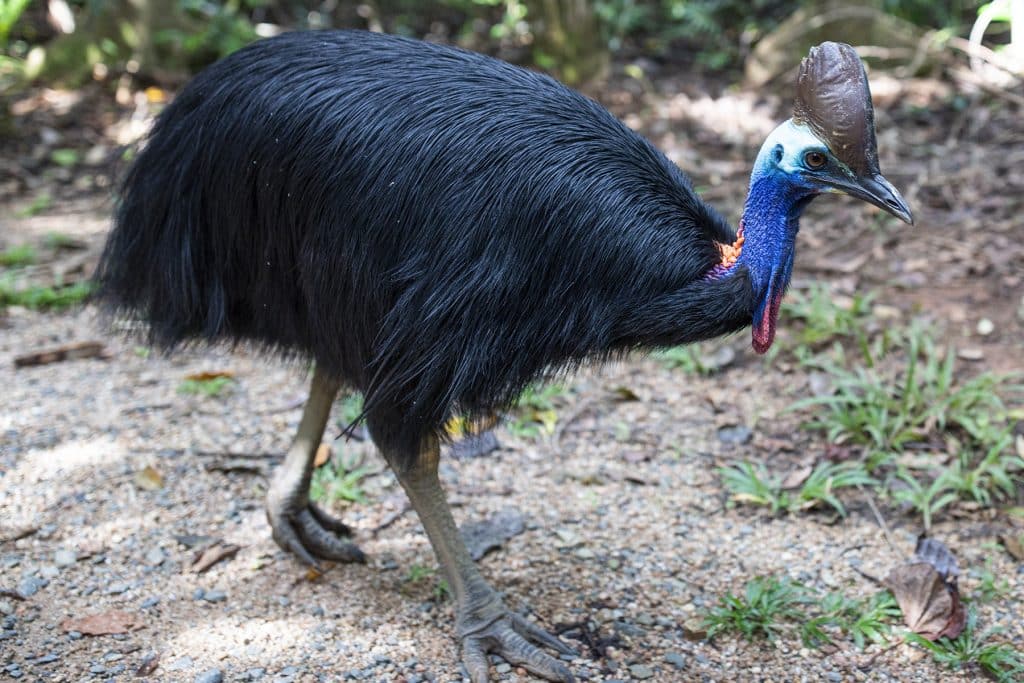In the heart of the lush rainforests of northern Australia, a creature shrouded in mystery and allure roams the dense undergrowth. Meet the cassowary, a striking and enigmatic flightless bird that has captured the fascination of wildlife enthusiasts and adventurers alike. Join us on a journey into the world of the cassowary, exploring its unique characteristics, ecological importance, and the importance of conservation efforts to protect this iconic species.
Majestic Appearance and Unique Features:
The cassowary, known scientifically as Casuarius, is a large and powerful bird with a distinctive appearance. Standing up to 6 feet tall and adorned with glossy black plumage, the cassowary is often recognized by its striking blue and black neck and a helmet-like casque atop its head. This casque, made of keratin, serves as a protective feature and may play a role in communication between individuals.
Equipped with powerful legs and three-toed feet armed with dagger-like claws, the cassowary is a formidable presence in its rainforest habitat. Despite being flightless, this bird is an exceptional runner and an agile navigator through dense vegetation.
Ecological Role and Habitat:
The cassowary is considered a keystone species in the rainforests of northern Australia, Papua New Guinea, and nearby islands. Its role in seed dispersal is crucial for maintaining the diversity and health of the forest ecosystem. The bird consumes a variety of fruits, and the undigested seeds are dispersed through its droppings, contributing to the regeneration of plant species in different areas.
These remarkable birds prefer the dense canopy and understory of rainforests, providing them with the necessary cover for foraging and nesting. Their distinctive calls echo through the forest, serving as a testament to their presence in these lush habitats.
Cultural Significance and Folklore:
The cassowary holds cultural significance for many indigenous communities in northern Australia and Papua New Guinea. In some cultures, the cassowary is considered a symbol of strength, and its feathers and bones are used in traditional rituals and ceremonies. The bird’s role in indigenous folklore and creation stories adds to its mystique, making it a revered figure in the spiritual narratives of these communities.
Conservation Challenges and Efforts:
Despite its cultural importance and ecological significance, the cassowary faces numerous threats, primarily from habitat loss due to deforestation and human development. Collisions with vehicles pose another significant risk to these birds, as they often roam across roads in search of food.
Conservation organizations and local communities are actively engaged in efforts to protect the cassowary and its habitat. Raising awareness about the importance of preserving rainforests and implementing measures to reduce human-wildlife conflicts are crucial steps in ensuring the survival of this iconic species.
The cassowary, with its majestic presence and vital ecological role, stands as a symbol of the intricate balance within the rainforests of northern Australia. As we delve into the mysteries surrounding this flightless giant, it becomes clear that the conservation of the cassowary is not just about protecting a single species but safeguarding the entire ecosystem it calls home. Through collective efforts and a deeper understanding of these magnificent birds, we can strive to ensure a future where the cassowary continues to roam the rainforests, contributing to the rich tapestry of life in Australia’s tropical landscapes.
More reads like this:
How the Fraser Island Dingo went from Fearsome to Loveable
5 Awesome Things To Do on The Great Ocean Road




